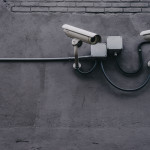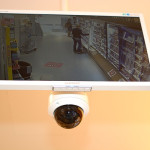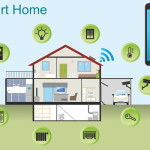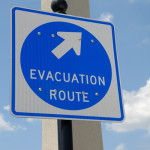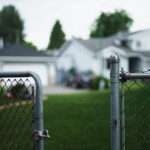Why You Need IP Security Cameras
Security camera systems have made great advances over the years. From traditional analog CCTV technology to IP networking, security camera quality and features have improved to provide better monitoring and security. Some of these enhanced benefits include higher resolutions resulting in clearer images, fewer cameras covering larger areas, and thus, a lower total cost of ownership. Many businesses and homeowners are opting to trade up to network IP security cameras, network video recorders (NVRs) and cloud-based storage for more convenient and affordable security.
Network IP Cameras & Assisted Living Communities
Aside from protecting homes and company headquarters, assisted living communities can also reap the benefits of installing network IP security cameras.
In the way that security cameras deter burglars from targeting your property, in assisted living facilities, the aim is to deter abuse and neglect. By strategically placing these cameras in and around the facility, family members can put their worries at ease by reviewing stored footage to ensure that no mistreatment is taking place and that the staff is providing the proper care. For facility managers, video surveillance footage can provide evidence should an employee or resident be charged with abusive behavior.
Network IP cameras can also help the staff keep a closer eye on residents or patients. For those residents at risk for falls, staff can potentially prevent falls and injuries, or respond faster to those incidents. Medical equipment such as oxygen tubes may get dislodged, and staff can get to the rooms faster to fix the problems. In the case of memory units, the entrances and exits can be closely monitored to prevent residents from wandering outside of supervised areas, and can help protect the facility from possible intruders.
These security cameras can also prevent employee theft. Although we would rather think that this is uncommon, it is not unheard of for residents to report their belongings stolen. Whether these claims are accurate or not, cameras provide evidence to prove what really happened. Also, facilities often find that supplies may go missing. To counter these losses, IP cameras can document the incident or prevent it from occurring in the first place.
Of course, opponents of these security measures stand firm in their belief that it makes it more difficult to recruit staff and that employees will have trouble making sound decisions for fear of families challenging their actions. The problem with this stance is that numerous other careers and industries are under constant surveillance with little to no issues arising. Proponents of employee surveillance believe these measures will help workers to make better decisions and avoid any questionable situations.
Why Should You Upgrade To IP Security Cameras?
As stated, upgrading to IP security cameras comes with a myriad of enhanced benefits. Aside from the obvious video quality improvement, IP cameras are able to utilize your existing CAT5 or CAT6 Ethernet cabling, saving time and money on installation. The intelligent video features include facial recognition, motion detection, audio detection and people-counting, to name a few. Also, because they are connected to the Internet, owners are able to remotely view live video, search archived footage, and receive alerts via any PC, tablet, or smart phone.
Choosing the Right IP Security Camera
Because the various IP camera choices on the market, it can be a bit overwhelming. Here are some important features you should know about before choosing the best IP cameras for your needs.
- Camera Types
There are three design options for IP cameras: bullet, dome and PTZ (Pan, Tilt, Zoom). As inferred by their name, bullet cameras resemble a bullet shaped and best suited for directional monitoring. They typically do not possess the capability to zoom in or move. Dome cameras are shaped like domes and ambiguously monitor areas, aiding in its role of deterring misconduct. “Speed domes” spin quickly to capture a broader range of images. Lastly, PTZ cameras are ideal for covering large areas. These cameras can move and capture different angles, thus, delivering the work of several fixed-point cameras in one single device. PTZ surveillance cameras may also be preprogrammed to scan an area or may be controlled remotely.
- Resolution
IP camera resolution is the amount of visual data that can be captured and is measured in megapixels. It is often provided in horizontal and vertical pixel dimensions (ex. A camera that has 1280 x 1024 resolution is 1.3MP because 1280 x 1024 = 1,310,720 or 1.3MP). A higher resolution means the camera can capture more data, resulting in improved video clarity.
- Power over Ethernet (PoE)
This allows you to transmit power over the data cable, which can run up to 100 feet. This will save you money and decrease installation limitations. In addition, the PoE standard 802.3af supports higher power ratings needed for motorized cameras (ex. PTZ).
- Wide Dynamic Range
If you are monitoring an area that has challenging lighting conditions, you will want a camera that has good wide dynamic range (WDR). This will control the backlight and remove shadows to produce adequate footage in difficult environments.
- IR LED
Infrared (IR) LED lighting is like night vision, allowing cameras to capture clear footage in low to no light conditions. IP cameras can see infrared light and when wavelengths reflect back, it is as if the room is illuminated and the camera can record video. Night vision capabilities improve with more IRLEDs and longer ranges.
- Weather/Vandal Resistance
If you are using your surveillance cameras outdoors, be sure to choose weatherproof and “vandal resistant” cameras, which will often be IP66 rated and IK10 rated respectively. This will safeguard against water or dirt, which can interfere with your recordings or damage your equipment. Some cameras even offer thermostatic controls, which will help to prevent condensation forming over the lens.
When upgrading to IP cameras within your home, business, or in assisted living communities, be sure to evaluate your needs and review your options before making a final decision. If you need assistance, please feel free to call us at 888-203-6294 to speak with a representative and request a free quote. You may also visit SecurityCamExpert.com to browse our inventory of network IP cameras and surveillance equipment.
Connect with us on Facebook, Google+, Twitter, LinkedIn, and Pinterest for the latest news and updates!
Business Security Misconceptions
As a business, you want to provide a sense of security and safety for both your customers and employees. So long as you continue to provide secure transactions, and safeguard your property and assets around the clock, you afford your business the opportunity for continued success.
You can achieve this level of protection with the right business security camera system. Without a proper security system, you leave your business at risk for theft, vandalism, and other criminal acts. And statistics unfortunately show that businesses are more often targeted than homes.
A business security camera system tailored to your specific needs will improve security, provide evidence as needed, and may even lower your insurance premiums. Despite these benefits, businesses still put themselves at risk by either failing to invest in security cameras or choosing outdated security systems. These actions are often rooted in common misconceptions regarding security systems, such as these.
Myth: Security systems are too expensive.
While they may have had hefty price tags in the past, nowadays there are plenty of high quality and affordable security camera systems on the market. By opting for higher quality systems, you are less likely to encounter performance issues and costly repairs.
Also, the cost of security systems hardly compares to the cost of replacing stolen items. According to the U.S. Chamber of Commerce, employee theft alone costs an estimated $20 billion to $40 billion per year.
Myth: Any security system is better than no security system.
While shortcuts may be easier, installing dummy cameras or only a few real security cameras still leaves your business vulnerable. Areas may go unmonitored, allowing for any misconduct to go unnoticed.
And with an outdated security system, you may come across issues left and right. Inconsistent performance may mean that break-ins or incidents go undocumented, leaving you with no evidence.
Myth: It’s just too complicated to update your security system.
Some believe that upgrading and updating security systems may take too much time, money, and resources. However, with the right approach, it doesn’t have to be. Aside from updating your network, installation can be rather simple, especially if you hire a professional company. Informing your staff about the change and keeping them in the loop will help the process go smoothly and quickly as well.
If you are still hesitant about investing in a business security system, or have any questions, please feel free to contact us at 888-203-6294. Our representatives will be happy to assist you and provide you with a free quote. You may also browse our inventory online at SecurityCamExpert.com, and connect with us on Facebook, Google+, Twitter, LinkedIn, and Pinterest.
Smart Homes: Proceed With Caution
Some people may opt for traditional security cameras for home security, but the landscape is changing. The emergence of connected devices has spurred the popularity of smart homes and the Internet of Things (IoT). However, as we connect more technologies and devices, we may be putting ourselves at a greater risk.
Internet of Things
Most people have heard of the term, but those who haven’t may not even realize they are a part of it. Whether you own a smartphone, smart TV or even a tablet, you are connected to the Internet of Things. And if you are investing in smart home appliances, you are absolutely connected.
Because of this, smart homes tend to be more susceptible to threats thanks to the lax cybersecurity measures (if at all) of most smart appliances. Even if other devices, such as smart thermostats, garage doors, or fire alarms, may have stronger security measures, if they share the same network as other, less secure appliances they are vulnerable to exposure and attacks.
In order to protect users and their own reputations, smart appliance manufacturers must take cybersecurity measures seriously. For your own safety, research the products you are interested in and be sure that their security measures meet or exceed your expectations.
Basic Security
One of the main problems with smart security technology is the do-it-yourself approach. Most consumers are drawn to DIY solutions because they seem to be more cost-effective, user-friendly, and cut out the need for professional installation. Unfortunately, mistakes made by the user could further compromise their security.
While these smart technologies indeed promote security and convenience, you may want to tread lightly. Consider the pros and cons of transitioning your home into a smart home and be sure to do your research and take the necessary precautions to ensure that your devices and systems are as secure and up-to-date as possible.
If you are weary of these smart security measures, you can always go the traditional route with security cameras and CCTV surveillance systems. Visit SecurityCamExpert.com to shop our selection or call 888-203-6294 for more information and a free quote! You can also find us on Facebook, Google+, Twitter, LinkedIn, and Pinterest.
Stay Safe This Halloween
When you think of Halloween, fun things like candy and costumes come to mind. But Halloween is also a dangerous night, as both vehicle and pedestrian traffic increases. Vigilance and early planning can help to ensure safety.
If you have surveillance cameras, they can help give you a sense of security and deter bad behavior. Before Halloween night, be sure that your security cameras are working properly. If you are out trick-or-treating or at a party, you can access your live feed to ensure that your property is safe. If you are at home, you can see when trick-or-treaters approach while monitoring for mischievous behavior or vandalism.
Below are more Halloween safety tips to keep your kids and loved ones safe.
- Avoid oversized costumes or costumes with excessive flowing fabric, such as capes or long sleeves. These pose a risk as loose clothing can graze a jack-o-lantern or open flame. Also, oversized costumes can cause kids to trip and fall. Be sure that costumes fit appropriately and check to see that shoelaces are tied before heading out.
- If possible, choose a brightly colored costume that drivers can spot easily. You can also use reflective tape or stickers, glow sticks or flashlights to increase visibility.
- Face paint and makeup are a safer choice than masks, which may obstruct vision. If a mask is worn, make sure that it fits properly and securely, and whenever possible, cut large eye holes.
- Inspect the treats. Anything that is tampered with, has loose wrappers, or just doesn’t seem right should be disposed. Also, homemade treats should be trashed, unless you know the person who gave it to your child and are sure that it is safe.
- Children under the age of 13 should always be supervised by an adult. Older teens should trick-or-treat in groups and have a set curfew. Creating a route ahead of time will help to keep track of your kids as well.
- Walk slowly. As with any other night, be mindful of cars and make eye contact with drivers. Always walk on sidewalks and cross at the crosswalks or traffic signals. If there are no sidewalks, then it is strongly advised to walk facing traffic and as far to the left as possible.
- Children should only go to well-lit houses and remain on the porch within street view. Also, remind children to never cross between parked cars and to look both ways before crossing.
- Drivers: back out slowly while keeping a watchful eye for children. High times for trick-or-treating are usually from 5:30pm-9:30pm. Distracted driving is dangerous and illegal, on Halloween and every day. If you must, pull over and park in a safe location, otherwise, it can wait.
Share your own Halloween safety tips with your peers and us on Facebook, Google+, Twitter, LinkedIn and Pinterest!
Visit SecurityCamExpert.com to browse our vast collection of quality security cameras and CCTV surveillance system packages. If you have any questions or would like to request a free quote, please feel free to call 888-203-6294.
Indoor Security Tips
Security cameras placed outdoors allow you to monitor your property while acting as a deterrent for trespassing. But what happens if criminals proceed anyways?
Indoor security cameras will show you what happens when the intruders get in. Should theft or damage occur, you are left with video evidence of the crimes to assist in capturing the criminals.
For everyday use, indoor security cameras help to monitor daily activities, such as kids returning home from school, or checking in on pets while you’re at work.
While there are several benefits of indoor cameras, it may be difficult discerning the most effective places to install them. Here are some helpful tips for choosing the best locations for your indoor security cameras.
Statistics show that the most common entry points for burglars are through first-floor doors or windows, thus, your main entrances should be your top priorities. The front door, back door, garage door, and other first-floor exterior doors and windows should be equipped with some type of security (ex. locks). If possible, installing security cameras to cover all of these spots would be ideal.
- One of the most common places for an indoor security camera is in a high traffic area that provides coverage for as many areas as possible. Try to find the right angle and placement for a camera that will give a bird’s eye view of the larger area. For example, the family room may have views of the kitchen, back door, garage door entrance, and possibly even the front door.
- For larger homes or homes with a second or third story, additional security cameras may be necessary to sufficiently cover the interior of the home. Expansive one story homes may need multiple cameras to cover different rooms and entrances, while multiple story homes may need more cameras to cover each level.
- If an extensive security camera system does not fit within your budget, choose key areas that are highly targeted by burglars and install cameras there. For example, the family room often houses expensive televisions and electronics. Or if you have a family safe, you can place a camera in that room for added security.
- Once you have chosen the locations for your cameras, be sure to install them out of reach. Not only will this help to get a better view, but it will also help to prevent any damage of theft. If your security cameras are easily accessible, burglars may destroy them to eliminate evidence, or possibly steal them.
Share your indoor security camera tips with us on Facebook, Google+, Twitter, LinkedIn, and Pinterest today!
For a great selection on indoor security cameras and more, visit SecurityCamExpert.com. For more information on site surveys and our installation services, please call 888-203-6294.
Protect Your Vacant Property
Think an empty building doesn’t need maintenance or security? Think again. Unoccupied buildings tend to be more susceptible to damage and criminal activity than those filled with expensive equipment. If your property will be vacant, whether long or short term, you should secure it as soon as possible.
Main Risks For Empty Buildings
- Weather
We all know that weather can cause significant damage relatively quickly, especially for buildings in areas known for inclement weather. Damage to the exterior, including the roof and windows, can also make its way inside to cause further problems.
- Thieves
If you leave equipment or anything of value in an unsecured building, you run a high risk of theft. Even if you’ve emptied the property, thieves may still enter and steal valuable construction materials (ex. copper pines or wires).
- Vandals
Even though you may have cleared out your property, you are still at risk for vandalism. Vandals may trash your property by leaving waste, breaking things, and covering walls in graffiti.
- Trespassing
This covers a number of threats, which include squatting and illicit activities.
How To Secure Your Vacant Property
- Secure Entrances
Before vacating a property, be sure that all windows and doors are properly closed and locked. Look for gaps or damage to the frames that may allow wind, rain, or intruders to get in.
If you plan on leaving for an extended period of time, you should consider investing in stronger methods of securing doors and windows. While traditional wood boarding may be cost-effective, these have also added to the blaze of an arson attack. Investing in a metal alternative may be a better choice. You may also want to consider steel security doors which make it impossible to access your building without special equipment.
- Maintain Exteriors
Any loose objects can be stolen, used to gain entry, or used as a weapon. For example, bins, palettes and spare construction materials can quickly turn into projectiles in the wrong hands, or can be picked up by high winds in a storm. Be sure to store large objects indoors or out of sight.
Landscaping may be an afterthought, but can make a difference. You should keep pathways clear of debris, such as snow and ice in the winter, and trim grass and hedges to deter vermin from inhabiting your yard. Landscaping also makes it appear that the premise is occupied, making it less of a target.
- Check The Alarms
A security alarm is a necessity. A security alarm system can deter intruders, and, if linked to the local police, can elicit immediate response to any incidents. If you vacate your building, be sure to check your system regularly to ensure that it is functioning properly. If your system is managed by a third party, be sure to inform them of your absence.
Because a fire, whether intentional or accidental, is always possible, you should also maintain your fire alarm and sprinkler system. Be sure that pipes and sensors remain functional.
- Increase Passive Security
While dummy cameras can be a reasonable deterrent for those on a budget, operational security cameras may be a better investment. If you plan on leaving your property vacant for a longer period, you may want a real security camera to record any trespassers or criminal activity that occurs while you’re gone.
It may behoove you to make your property physically harder to access, especially if you have open spaces. Fencing and gates with proper locks and concrete barriers are effective ways to keep intruders out.
- Hire Active Security
If you will be storing valuable equipment and materials on site during your absence, you may want to hire professional guard control or even guard dogs and handlers. You can schedule the guard to check on your building at random times to keep trespassers away and to report any unusual activity.
If a building is scheduled for future renovation or demolition, registering your building for a guardianship scheme could be a more cost-effective solution. While you won’t be able to freely access your building when the guards are there, but it will safeguard against trespassers and squatters.
How do you protect your vacant property? Share your tips on Facebook, Google+, Twitter, LinkedIn, and Pinterest.
Find quality security cameras and CCTV surveillance systems when you shop at SecurityCamExpert.com! Visit us online or call 888-203-6294 to learn more about our services, including installation and support.
September Is National Preparedness Month
Recently, Hurricane Harvey and Hurricane Irma have devastated and affected many, leaving a trail of destruction in large areas. Whether it is hurricanes, thunderstorms or tornadoes, natural disasters provide a stark reminder of our vulnerability and that we should always be prepared.
September is National Preparedness Month and this year’s theme is “Disasters Don’t Plan Ahead. You Can.” Each week throughout the month focuses on a different theme, all helping to emphasize preparedness among everyone including youth, older adults, and people with disabilities and others with access and functional needs.
The best way to combat the unpredictability of natural disasters and emergencies is to plan ahead. Here are some helpful tips to help get you started.
Be Informed.
Visit www.ready.gov for more information on what to expect, how to make a disaster kit and how to prepare and plan ahead for disasters.
Many emergencies can happen anywhere, such as power outages or disease outbreaks. But certain disasters are more likely in some places than others. For example, in California, earthquakes are more common than tornados or tropical storms. Understand which types of natural disasters are common for your area and begin preparing for those accordingly.
It is recommended that you understand the local mass warning systems that officials will use to inform the public of extreme weather conditions. Commonly used are the National Weather Service and the U.S. Geological Survey. Know how to receive information from these agencies and prepare a backup way of receiving this information in case your primary system goes down.
You should also know where evacuation points are located in the event you cannot get home or your current location becomes unsafe. Know what circumstances would require evacuation and when to shelter in place.
Make A Plan.
Keep it practical and tailored to disasters you are most likely to encounter. Take what we have previously mentioned and discus it with your family. Go over different disaster scenarios and what the family plan is for each one. Things like whether it occurs on a weekday or weekend and if children are at school should all be considered while planning.
Making a disaster kit is the next step. You should include supplies necessary for a three-day period (the estimated time it might take to clear roads, restore power and have emergency crews reach people).
After a disaster, emergency responders will address critical needs first and might not be able to get to everyone right away. A disaster kit will allow you to take care of yourself, your family, and possibly others, freeing up emergency responders to focus on the critically injured and restoring infrastructure.
Creating multiple kits and storing them in different locations (car, office, home) is suggested – you never know where you will be when disaster strikes.
Get Involved.
You can participate in America’s PrepareAthon! – a nationwide campaign to increase community preparedness and resilience.
Share your own preparedness tips with us on Facebook, Google+, Twitter, LinkedIn, and Pinterest. Visit SecurityCamExpert.com to browse our stock of CCTV security cameras and systems to keep an eye on your properties.
Perimeter Security
Whether you are securing your home or business, perimeter security is often your first line of defense. Aside from the exterior of the structure, perimeter security creates boundaries to keep intruders out. If you are considering perimeter security, there are numerous options available to you – here’s what you need to know.
Locks
Locks are very important to perimeter security. If you have nothing protecting your property beyond the walls of your home or building, you will need to invest in strong, sturdy locks. The most common breach would be forced entry, which simply destroys the lock to gain access. To safeguard against this, you want to choose locks that make use of hardened metal alloys that are as thick as possible.
Cutting attacks are common if you are using padlocks on your gates. Aside from the shackles of the locks, the hasp or chain being secured by the padlock may also be targeted for cutting. If these are weaker than the lock, the strength of the lock will not matter.
When it comes to covert entry, bump keys are more of a concern than lock picking, as the latter wastes time and effort. The internal complexity for locks will help increase perimeter security and prevent unauthorized key duplication.
Walls
Unlike a fence, walls provide more privacy as they better obstruct visibility. Higher walls mean lower visibility and a greater obstacle to gain entry. The downside is that the decreased visibility affects both sides, meaning that while outsiders may not be able to see in, you may not be able to see anyone approaching the property.
Luckily, the visibility concerns for high walls can be resolved with the use of security cameras or other forms of documentation (such as security guards). Documentation is a key consideration (which will be discussed further), but it is not always feasible for some.
In the end, it all comes down to the intention of your perimeter security. With a wall, you get more privacy and a sturdy barrier which allows you to put more focus on securing the gate.
Fencing
Fences offer extreme flexibility in that the price, look, and functionality have the most range. You can adjust the visibility by choosing different designs and even growing ivy or other plants around it. In extreme cases, most common fences may be easier to electrify, depending on the material of the fence.
Unless you have concerns about automotive ramming threats, the fact that a fence is weaker than a wall may be a minor detail. However, fences may be compromised at certain points, whether from vandalism or wear, thus creating entryways which defeat the purpose of perimeter security measures. Even if the openings are not wide enough for humans, you run the risk of animal infestation or pet escape.
Wood fences and chain link fences are often the most common types, and usually signify a boundary that others should not cross, or simply denote a property line. Fences alone are rarely high security, but with electrification or barbed wire, they can be somewhat intimidating.
Gates
A gate is the moving section on a gate or wall that allows entry and exit through perimeter security. Because this is usually the only point of entry and exit around the perimeter of a building, the gate will need a locking mechanism.
If you are planning on taking vehicles past the perimeter security, you may want to use a motorized track and electronic lock. For gates with less traffic or only foot traffic, choose a high-security padlock. There may also be a gate setup that allows you to use a deadbolt and or/keyed handle/knob.
For effective perimeter security, a keyed handle/knob may not be the best choice. A deadbolt provides more security, however, the strength of the deadbolt must be considered. But keep in mind, if the lock is too strong, the material of the gate may be attacked, or intruders may simply climb over.
Lighting
Perimeter security systems should always consider lighting, and one of the first things to assess is shadows. Trees, pillars and other tall obstructions will create dark shadows for criminals to lurk. With proper light, you afford yourself the ability to see criminals approaching or attempting to bypass your perimeter security.
Motion sensor lights are effective in that they focus attention and are often the choice for many residential buildings without security guards. For residents, a light turning on suddenly will often alert them of unexpected movement around the house. For those properties with high walls, or an obstructing fence, the abrupt light hopefully catches the attention of neighbors or pedestrians.
Despite drawing attention, your security depends on whether or not bystanders or neighbors intervene. Everyone has an interest in preventing crime, but if someone is unaware of the threats or the victim, people may do nothing to avoid confrontation. It may behoove you and your property to get to know your neighbors and keep a lookout for each other.
Alerts & Notification
Some people may struggle with the decision of investing in a dog or an alarm system. While getting both is definitely an option, the decision will likely come down to your ability to take care of an animal. When it comes to alarms, you will want one that offers monitored security so that authorities can be notified in case of emergency.
However, these notifications are only effective if response times are within the average time it takes to commit a break-in. If not, alerts and notifications are rather useless. A loud alarm may help to alert anyone who is around to the crime that is taking place.
If you’re looking for more discreet notifications, a smart lock with access notifications might be the solution. This allows you to know when a lock has been opened, and can be extremely helpful if you suspect any internal threats.
Documentation
Most perimeter security systems rely on security cameras. They are largely accessible and are great for capturing evidence of threats and criminal acts.
Before installing security cameras, you should know what is allowed and what is not. You must abide by the law when it comes to documentation efforts otherwise your footage will be useless and may even get you in hot water.
When choosing cameras, you should keep your security intentions in mind. If you need footage that will hold up in court, you will need the right kind of camera to record quality video in that environment. You will need to consider glare from the daylight and possibly night vision. Also, you need to consider placement as you may need multiple cameras to adequately cover your perimeter. If you have more questions regarding security cameras systems and installation, feel free to call us at 888-203-6294.
Natural Barriers
A positive natural barrier is something that offers another level of security to your property. This can be anything from the proximity to a police station to a single, long road leading to your home.
Consequently, there are also natural barriers that prevent you from taking full advantage of your possible perimeter security system. For example, a treeline on the side of your property may offer a natural border, however, it may also help intruders cover their approach. Also, motion sensor cameras and lights placed in heavy foot traffic areas may produce lots of false alarms, becoming more of a nuisance than an effective security measure.
Your best bet is to identify what works for you and what does not in terms of security. You shouldn’t invest in a method of perimeter security just to use it. Focus on the positive barriers and try to compensate for any negative barriers you cannot change.
Aesthetics
The consideration for aesthetics is to find a balance between it and your perimeter security. Rather than choosing to make the property look good and then incorporate security, you should be trying to make the security you need look good.
If you are adding to your landscape or home, you should always consider how it will affect your perimeter security. It is best to opt for something with a neutral or positive effect, not something that will be a detriment.
Access Control
Who has access to your property is a very important part of making your perimeter security work to your benefit. Key control is a good starting point (numeric codes, RFID remotes, physical keys, etc.). With codes and biometric locks, your access control management software may make it quite simple to know who is entering the property and when. If any issues arise, it is easy to simply revoke privileges.
Those who have access should be trusted individuals. You should be sure that they will not take advantage of your property and will take the necessary precautions to protect their key from being stolen or misused.
Key control for physical keys can be taken care of by investing in locks with patented keyways. This will improve your protection against most forms of covert entry, but mostly it will prevent unauthorized key duplication.
Which perimeter security methods do you find most effective? Share with us on Facebook, Google+, Twitter, LinkedIn, and Pinterest.
Visit SecurityCamExpert.com to browse our selection of quality CCTV surveillance systems and learn more about our Installation and support services.
CyberLabLA
It seems Los Angeles is continuing its efforts to shed light on cybersecurity in hopes to decrease risks all around. Initially, the city used federal grant funds to install tools to centralize cybersecurity issue monitoring. Now, officials have unveiled a cybersecurity initiative geared toward businesses and residents.
The Los Angeles Cyber Lab (CyberLabLA) is a new public-private-partnership led by a Board of Advisors including Mayor Eric Garcetti along with top Los Angeles businesses and government officials. CyberLabLA’s mission is to protect personal and protected information from malicious cyber threats by sharing the latest cybersecurity threat data, alerts and intelligence gathered by those involved. Free membership will be open to all businesses and Los Angeles residents.
While there have been threat-sharing partnerships in the past, none have emerged to address an entire region or small- and medium-sized businesses like this program plans to do. And despite the fact that companies in the same industry are more likely to face similar threats than those in unrelated industries, all businesses are expected to find value. Mayor Garcetti hopes that through shared knowledge of threats, regardless of industry, businesses in Los Angeles will be better protected.
Still in its infancy, CyberLabLA will roll out in three phases. Phase 1 will begin with Protection and Alerts in which Los Angeles will share information generated from its Integrated Security Operations Center (ISOC) with all members. These updates include cybersecurity data, alerts, indicators of compromise and threat intelligence. Phase 2 will invite members to share data with the organization, sans confidential or proprietary information for added security. Phase 3 will develop the Cyber Lab Innovation Incubator (Incubator). Security vendors will be able to test appliances and tools via virtual connections to a live, but isolated, city of Los Angeles network (“Honeypot”). The Incubator will be populated with student interns, affording them real world experience in a security environment. Eventually, the Incubator will generate additional intelligence and information to share with members.
Initial advisors include Anschutz Entertainment Group (Staples Center), Cisco, Motorola, Cedars-Sinai, City National Bank, Dollar Shave Club and SoCal Edison. The city’s move to push cybersecurity as a public service will not only benefit businesses, but its effects will trickle down and help to protect customers and residents as well.
What are your thoughts on CyberLabLA? Would you consider joining? Share with us on Facebook, Google+, Twitter, LinkedIn, and Pinterest.
For your physical security, browse our selection of CCTV surveillance systems at SecurityCamExpert.com. To request a site survey, free quote, or to schedule an installation, please call 888-203-6294.
Back-To-School Transportation Safety Tips
It’s that time of year again – summer is winding down and children are heading back to school. Thus, we must also deal with an increase in foot and street traffic. This can cause increased stress in some, which may result in dangerous situations and bouts of road rage. It is important to remember to proceed with caution. Take heed of these back-to-school road safety tips.
- Slow Down
When kids are present (especially in school zones and neighborhoods) before and after school, it is important to abide by speed limits and slow down.
- Keep Your Distance
Always keep a safe distance between you and the bus (or any vehicle) you are following. This will allow you enough time and space to react to any of the bus’s intentions.
And remember, it is illegal to pass a school bus that is stopped to load or unload children. The area 10 feet around a school bus is the most dangerous for children – be sure to stop far back enough to allow kids to safely enter and exit the bus.
- Heightened Alert & Awareness
In school zones, near parks or playgrounds, and in neighborhoods, be more alert when watching for children. And always obey a crossing guard’s stop sign at intersections and crosswalks.
- Do NOT Block The Crosswalk
When stopped at a red light or waiting to make a turn, avoid blocking the crosswalk. By blocking the crosswalk, pedestrians may be forced to walk around you, possibly putting them in the path of moving traffic. Always stop before the crosswalk line and watch for pedestrians.
- Follow Pick-Up & Drop-Off Instructions
If there are dedicated pick- up and drop-off zones and rules, follow them. They are put in place for the safety of your children. Double-parking not only holds up traffic, but also reduces visibility for all, increasing the risk for an accident or dangerous situation.
- Walking Routes
If you are letting your children walk to school, be sure to scope out the route beforehand. You want to make sure that the route offers good visibility, is relatively free from hazards, has plenty of pedestrian room at a safe distance from traffic, and involves no dangerous crossings. There should be well-trained crossing guards at every intersection your children must cross. Consider the available daylight when your child will be walking and always dress them in brightly colored clothing, regardless of visibility.
- Bike Safety
If your children will be riding a bike to school, they must always wear a Consumer Product Safety Commission-approved helmet. Kids must also bike during daylight hours only, wear bright attire, and follow the rules of the road. Children under nine must ride with an adult and out of the road as well. It is up to the parents’ discretion whether or not older children may ride bikes in traffic.
Share your own back-to-school tips with us on Facebook, Google+, Twitter, LinkedIn, and Pinterest.
Shop our stock of quality CCTV security cameras and surveillance equipment online at SecurityCamExpert.com. To learn more about our products and services, or to request a quote or site survey, please call 888-203-6294.
